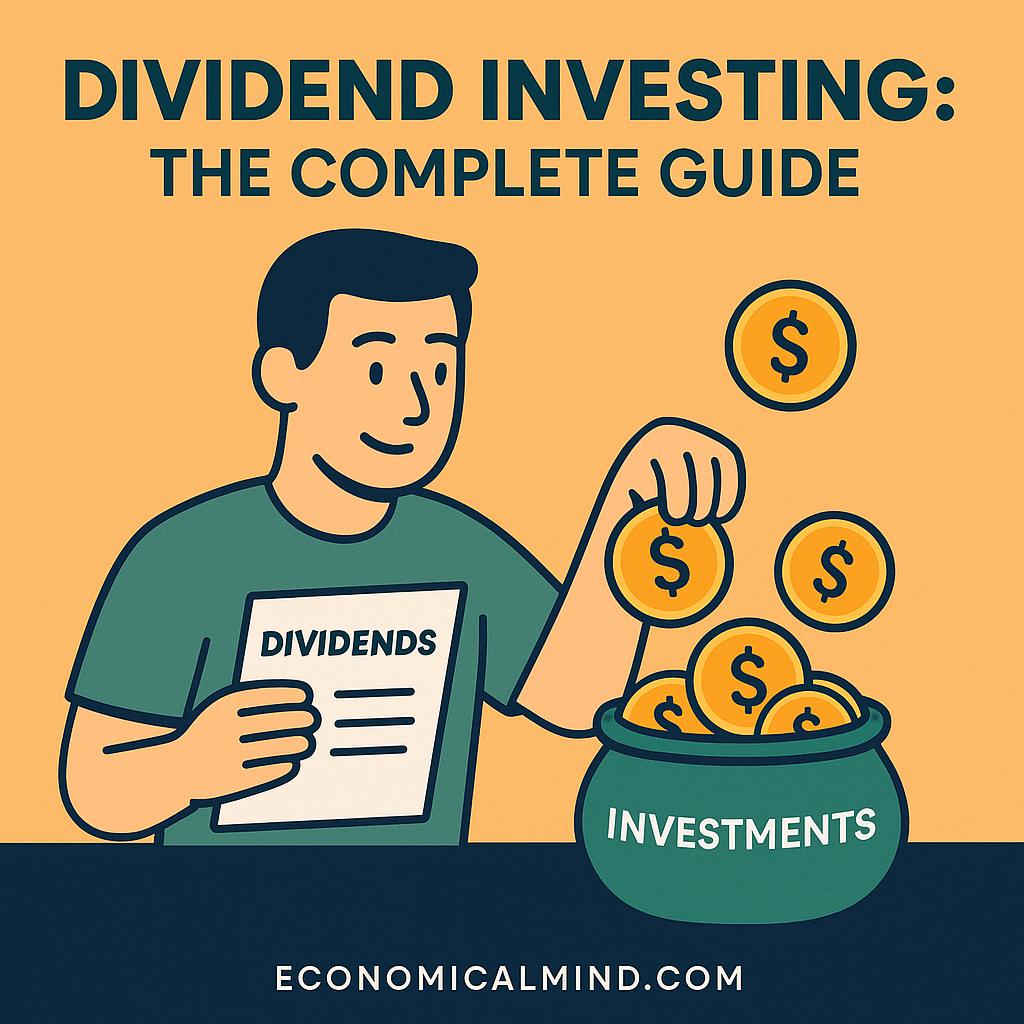
Dividend investing is one of the simplest ways to grow wealth and generate steady income. It focuses on owning companies that regularly share their profits with investors through cash payouts — called dividends. Whether you’re building passive income or reinvesting for long-term growth, understanding dividend investing can transform how you approach the stock market.
What Is Dividend Investing?
Dividend investing means buying stocks that pay you a portion of their earnings, typically every quarter. Many mature, stable companies use dividends to reward shareholders while still growing steadily.
Example: If a company pays a $1 annual dividend and you own 100 shares, you’ll receive $100 in cash each year — often deposited directly into your brokerage account.
Investors often reinvest these dividends to buy more shares, compounding their returns over time.
Pros of Dividend Investing
1. Steady Income Stream
Dividends provide regular cash flow — great for retirees or anyone wanting passive income.
Example: A portfolio paying a 4% dividend yield generates $400 annually per $10,000 invested.
2. Compounding Power
Reinvesting dividends helps your investments grow faster over the long term.
Example: Reinvested dividends buy more shares, which then earn more dividends — creating a snowball effect.
3. Lower Volatility
Dividend-paying stocks often belong to stable, profitable companies with steady earnings.
Example: Dividend investors typically experience smaller losses during downturns.
4. Long-Term Wealth Building
Dividend stocks can appreciate in price while also paying income.
Example: You gain both capital growth and cash flow over time.
5. Tax Advantages (for Some Investors)
Qualified dividends may be taxed at lower rates than regular income.
Cons of Dividend Investing
1. Slower Growth Potential
Dividend stocks can be less aggressive than growth stocks.
Fix: Combine dividend stocks with growth funds for balance.
2. Dividend Cuts During Recessions
Companies may reduce or suspend dividends in tough times.
Fix: Diversify across sectors and focus on companies with strong payout histories.
3. Taxes on Dividends
Even if reinvested, dividends are still taxable in most cases.
Fix: Hold dividend stocks in tax-advantaged accounts like IRAs or 401(k)s.
4. Concentration Risk
Relying too heavily on one sector (like utilities or banks) can limit diversification.
Fix: Build a portfolio with a mix of dividend sectors.
5. Not Always a Sign of Strength
A high yield can sometimes indicate trouble if it’s unsustainable.
Fix: Check the company’s payout ratio — ideally under 60%.
Best Practices for Dividend Investing
1. Focus on Dividend Aristocrats
These are companies that have increased dividends for 25+ consecutive years.
2. Analyze the Dividend Yield
A yield between 2%–5% is often ideal. Too high could mean risk; too low may not move the needle.
3. Check the Payout Ratio
This shows how much profit goes to dividends. A sustainable ratio is key for consistency.
4. Reinvest Dividends Automatically
Use a Dividend Reinvestment Plan (DRIP) to grow your holdings over time.
5. Diversify Across Sectors
Spread your investments among industries like healthcare, consumer goods, and technology.
6. Track Dividend Growth Rate
A company that raises dividends yearly shows financial strength and shareholder focus.
7. Use ETFs for Simplicity
Dividend-focused ETFs provide instant diversification and lower management effort.
8. Review Annually
Monitor dividend consistency and adjust your portfolio if payouts decline or companies underperform.
9. Hold for the Long Term
Dividend investing rewards patience — short-term selling defeats compounding.
10. Mix with Growth Investments
Blend dividend stocks with growth-oriented assets for a balanced approach.
Key Takeaway
Dividend investing offers both growth and income — a rare combination in the investing world. With a disciplined approach and consistent reinvestment, it’s one of the most reliable strategies for building long-term wealth.
